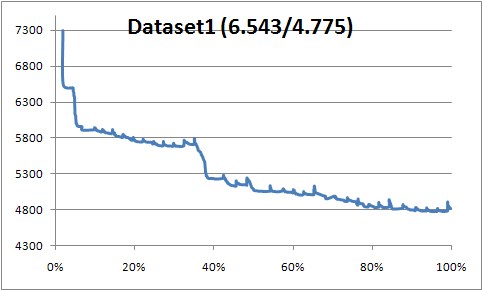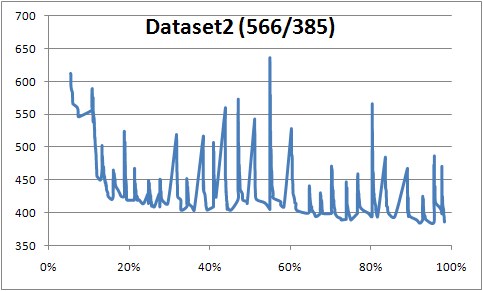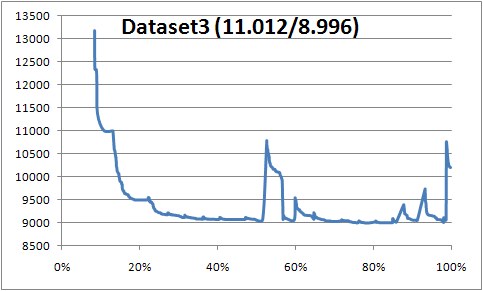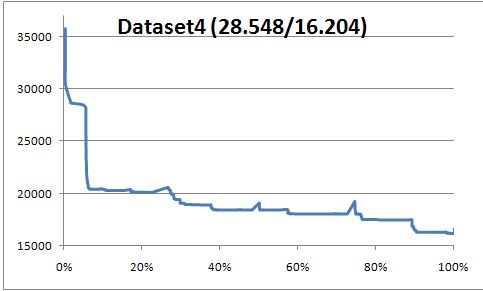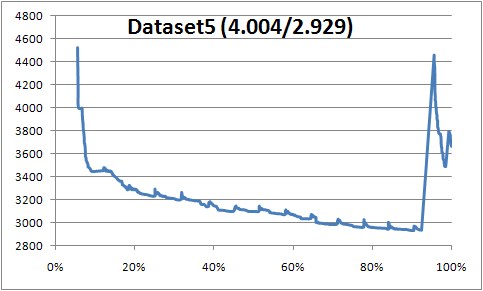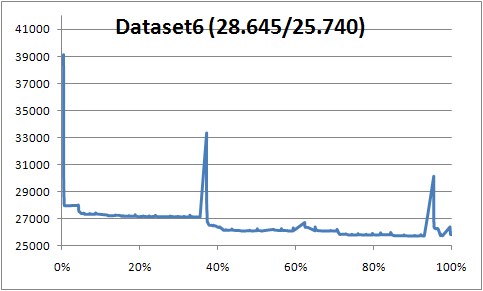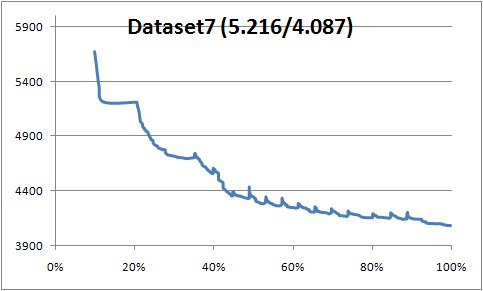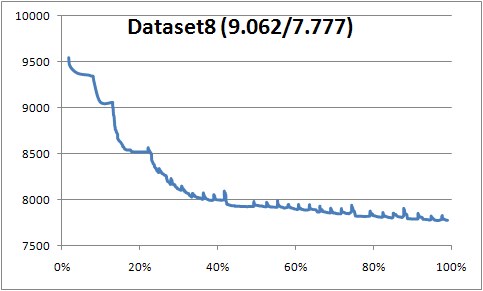
ITC07-DATASETS |
||||||||||||
|
Exams |
Students |
Periods |
Rooms |
Two In A Row Penalty |
Two In A Day Penalty |
Period Spread |
Number Of Mixed Durations Penalty |
Number Of Largest Exams |
Number Of Last Periods To Avoid |
Frontload Penalty |
Conflict Density |
Dataset 1 |
607 |
7891 |
54 |
7 |
7 |
5 |
5 |
10 |
100 |
30 |
5 |
5.05% |
Dataset 2 |
870 |
12743 |
40 |
49 |
15 |
5 |
1 |
25 |
250 |
30 |
5 |
1.17% |
Dataset 3 |
934 |
16439 |
36 |
48 |
15 |
10 |
4 |
20 |
200 |
20 |
10 |
2.62% |
Dataset 4 |
273 |
5045 |
21 |
1 |
9 |
5 |
2 |
10 |
50 |
10 |
5 |
15.00% |
Dataset 5 |
1018 |
9253 |
42 |
3 |
40 |
15 |
5 |
0 |
250 |
30 |
10 |
0.87% |
Dataset 6 |
242 |
7909 |
16 |
8 |
20 |
5 |
20 |
25 |
25 |
30 |
15 |
6.16% |
Dataset 7 |
1096 |
14676 |
80 |
15 |
25 |
5 |
10 |
15 |
250 |
30 |
10 |
1.93% |
Dataset 8 |
598 |
7718 |
80 |
8 |
150 |
0 |
15 |
25 |
250 |
30 |
5 |
4.55% |
|
Muller (1) |
Gogos, Alefragis, Housos (1) |
Atsuta, Konobe, Ibaraki |
De Smet |
Pillay |
Muller (2) |
Gogos, Alefragis, Housos (2) |
Dataset 1 |
4.370 |
5.905 |
8.006 |
6.670 |
12.035 |
4.356 |
4.775 |
Dataset 2 |
400 |
1.008 |
3.470 |
623 |
3.074 |
390 |
385 |
Dataset 3 |
10.049 |
13.771 |
17.669 |
infeasible |
15.917 |
9.568 |
8.996 |
Dataset 4 |
18.141 |
18.674 |
22.559 |
infeasible |
23.582 |
16.591 |
16.204 |
Dataset 5 |
2.988 |
4.139 |
4.714 |
3.848 |
6.860 |
2.941 |
2.929 |
Dataset 6 |
26.585 |
27.640 |
29.155 |
27.815 |
32.250 |
25.775 |
25.740 |
Dataset 7 |
4.213 |
6.572 |
10.473 |
5.429 |
17.666 |
4.088 |
4.087 |
Dataset 8 |
7.742 |
10.521 |
14.317 |
infeasible |
16.184 |
7.565 |
7.777 |

|
dataset1 |
dataset2 |
dataset3 |
dataset4 |
dataset5 |
dataset6 |
dataset7 |
dataset8 |
Two Exams in a Row |
154 |
0 |
1.620 |
5.859 |
0 |
3.740 |
25 |
0 |
Two Exams in a Day |
0 |
10 |
1.610 |
4.290 |
0 |
0 |
0 |
0 |
Wider Spreads |
2.716 |
0 |
4.926 |
3.925 |
1.259 |
19.900 |
3.602 |
6.872 |
Period Penalties |
320 |
0 |
100 |
2.000 |
200 |
450 |
0 |
365 |
Room Penalties |
1.050 |
375 |
0 |
0 |
0 |
1.200 |
0 |
135 |
Mix Duration Penalties |
280 |
0 |
0 |
0 |
0 |
75 |
0 |
0 |
Front Load Penalties |
255 |
0 |
740 |
130 |
1.470 |
375 |
460 |
405 |
Total Penalty |
4.775 |
385 |
8.996 |
16.204 |
2.929 |
25.740 |
4.087 |
7.777 |
Solution files per dataset
The above results are included in the paper "An improved multi-staged algorithmic process for the solution of the examination timetabling problem" that is currently under review in the Special Issue of Annals of OR on the Practice and Theory of Automated Timetabling.
